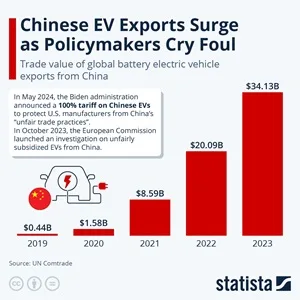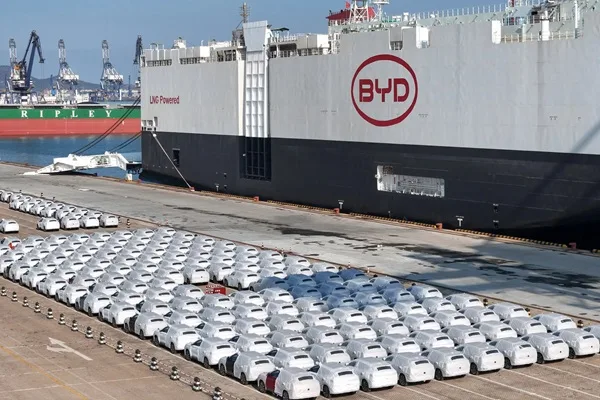EU to Slap Additional 38% Tariff on Chinese EV
Following its investigation, the EU announced plans to impose an additional tariff of up to 38.1% on Electric Vehicles (#EV) made in China. The hike is in addition to the 10% hike which was implemented earlier.
With its emergence as a global EV leader, China poses a threat to European car makers who are finding it hard to compete with Chinese brands. The investigation initiated by the EU took nine months and concluded that ‘state support’ has distorted the market in favor of Chinese auto makers and a tariff is thus necessary to protect European companies and jobs.
The Chinese Foreign Ministery spokesperson, Mr LIN Jian, has labelled the move as ‘a typical case of protectionism’ which is in clear violation of WTO rules of open and fair trade. He added that China will take all necessary measures to firmly safeguard its rights and interests. Chinese car makers hammer in the effect that they make a better with modern features priced at a sweet spot price point which makes their EV highly attractive.

In 2023, Chinese EV made up nearly 25% of the EU market compared to just a negligeable amount just a few years ago. From the other perspective, the EU represents nearly 38% of all China’s global exports of EV.
Different Chinese car brands face different tariff; Chinese car makers which cooperated with the EU investigation will face a 21% tariff while those which did not will have to do with the top tariff hike of 38.1%. Thus, SAIC, which makes the MG brand, faces the top tariff of 38.1%. Geely, owner of Volvo, faces a 20% tariff while BYD, which markets the Dolphin and Seal models in EU, will experience a 17.4% tariff.
This new tariff comes after an existing levy of 10% which was already imposed on EV imported from China. In combination, Chinese EV will face tariff of about 50%. The new tariff regime is set to become in force as from the 4th of July 2024 and Chinese car makers have the opportunity to submit evidence to challenge the findings of the investigation till then.

Interestingly, certain German stakeholders did not seem too happy with the EU’s findings and decisions. In fact, German Volkswagen has a JV with SAIC. German Chancellor Scholz underlined that half of EV imported from China were actually by western manufacturers in China. For instance, many Tesla car models used in EU are actually made in China.
Risking retaliatory measure, Germany’s VDA auto industry association underscored the importance of ‘free and fair trade”.’ A Mercedes-Benz executive chirped in by stating that “what we do not need, as an exporting nation, is rising trade barriers.”
In preparation for these protectionist measure, China has been preparing itself for some years now. It has set up battery plants and vehicles factories in Eastern Europe and Northern Africa to be closer to the EU market. This latest move could accelerate the delocalization of the EV ecosystem to Europe or trigger a trade war between EU and China.
It is worth recalling that the EU has set a target of 2035 to phase out polluting vehicles that run on fossil fuels in a bid to achieve #NetZero. It is worth recalling that the US quadrupled tariffs on Chinese EV just last month, raising duty from 25% to 100%. China also deplored that such short-sighted moves would only hinder the #EnergyTransition.

